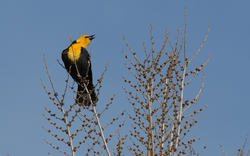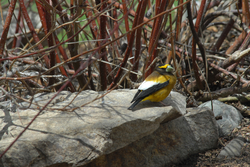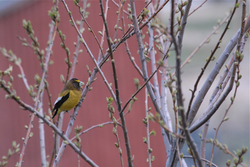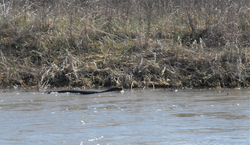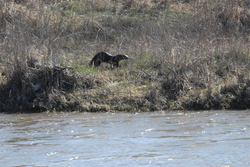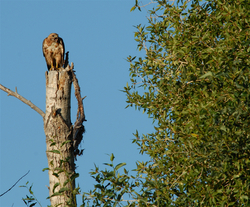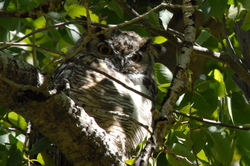While I love all the seasons on the ranch, mud season- the period of time between the closing of the ski mountain in mid-April and the arrival of summer in late May- is my favorite. The tourists have gone home, and many of the locals leave town for a few weeks for warmer climes. The weather varies dramatically from day-to-day - sunny, rainy, snowy, blowy. Flocks of birds migrate through the area, while other flocks stay and begin the breeding cycle.
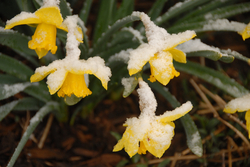
As the snow melts, the ranch transforms itself practically overnight from white and brown to a dazzling green - so green it almost hurts your eyes. Green grass, green buds, green leaves, even green frogs cover the landscape in all directions. And shortly following the greening of the ranch, splashes of yellow begin to appear. Golden daffodils bloom in my front and back garden, sometimes poking through the white snow that has fallen overnight. The dull brown winter plumage of the American Goldfinch suddenly transforms to the bright
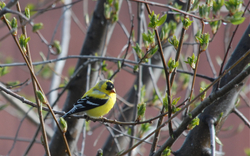
canary yellow that seems more typical of tropical species rather than North American birds. But my favorite yellow - a kind of yellow-orange - shows up in the form of a single Yellow-headed Blackbird that visits the ranch each spring. I know he has arrived when I hear his raucous call, reminding me of the sound of a rusty hinge. (Click hear to hear his song). He sports a brilliantly yellow head, neck, and chest, and flashes white wing patches when he flies. He joins the throngs of other blackbirds that frequent my feeders during mud season, but with his flashy yellow coloration and his unique call, he grabs the spotlight.
